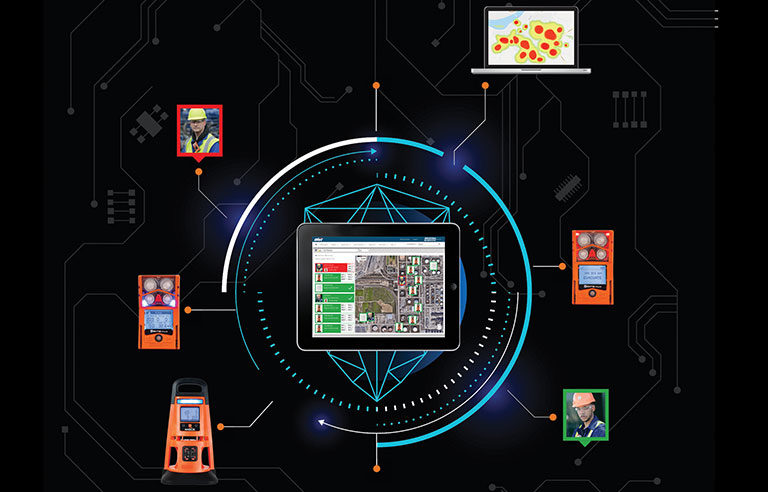Building a connected worksite
How can I use digital transformation and Industrial Internet of Things to create a connected worksite? Do I need to change facility infrastructure, or hire someone to implement and manage connected solutions?

Photo: Industrial Scientific Corp.
Responding is Mike Russin, product line director, Industrial Scientific Corp., Pittsburgh.
Leveraging Industrial Internet of Things technology allows employers to gain visibility into employees and worksites in real time, helping keep workers safe on the job, reduce downtime and increase efficiency onsite.
The phrase IIoT might suggest complicated IT setup and added burden for your team. However, IIoT technology has become more user-friendly – making it simple to implement connected solutions and save time by using the insights they provide.
You should consider three main components when adopting connected solutions: hardware, connectivity options and software.
Cloud-connected personal protective equipment is the first step to connecting your workforce. These devices monitor hazards while collecting real-time data and relaying it to the cloud. Fortunately, gas detectors and other safety hardware devices can connect automatically without additional infrastructure or IT help.
Common connectivity options include Wi-Fi, cellular, satellite, Ethernet and peer-to-peer – your choice depends on where and how you’ll use your gas monitors. This flexibility allows you to choose an option that eases implementation while giving you the reliable connectivity you need.
Peer-to-peer networks, also known as mesh networks, are a popular choice for industrial environments because of their reliability and minimal IT setup. Some mesh networks are also self-healing, meaning they can still function and transmit information even if one or more devices disconnect from the network. Peer-to-peer connectivity is a great option for local alarm sharing among workers and connected devices as well.
Wi-Fi, cellular and satellite are used to transmit information from gas detectors onsite to live monitoring software. Wi-Fi connectivity is often a good option for in-plant monitoring, while a combination of cellular and satellite is ideal for connecting lone workers in remote locations. Cellular connectivity is optimal for most applications, depending on the cellular coverage at your location.
Finally, you need software that displays the live data gathered by your hardware so you can use insights to drive safety and operational improvements. This work is typically done by an employer’s industrial hygienist, safety manager or another employee onsite who’s already responsible for equipment management and compliance. Your safety leaders can use the data collected to reassess workers, behaviors and environments; identify problems; and make changes accordingly.
By eliminating manual recordkeeping and providing one source of truth for hazards, equipment and people, you can reduce the time your safety leaders need to manage your data and help them make more informed decisions about their safety program.
When it comes to IIoT, it’s always an option to start small and grow as you need – many connected solutions are scalable and allow you to approach the transition how you need to. The benefits of a connected worksite far outweigh the costs. From instant visibility to driving operational changes using insights through data, connectivity can add efficiency and safety to your facility without draining your time or resources.
Editor's note: This article represents the independent views of the author and should not be construed as a National Safety Council endorsement.
Post a comment to this article
Safety+Health welcomes comments that promote respectful dialogue. Please stay on topic. Comments that contain personal attacks, profanity or abusive language – or those aggressively promoting products or services – will be removed. We reserve the right to determine which comments violate our comment policy. (Anonymous comments are welcome; merely skip the “name” field in the comment box. An email address is required but will not be included with your comment.)

